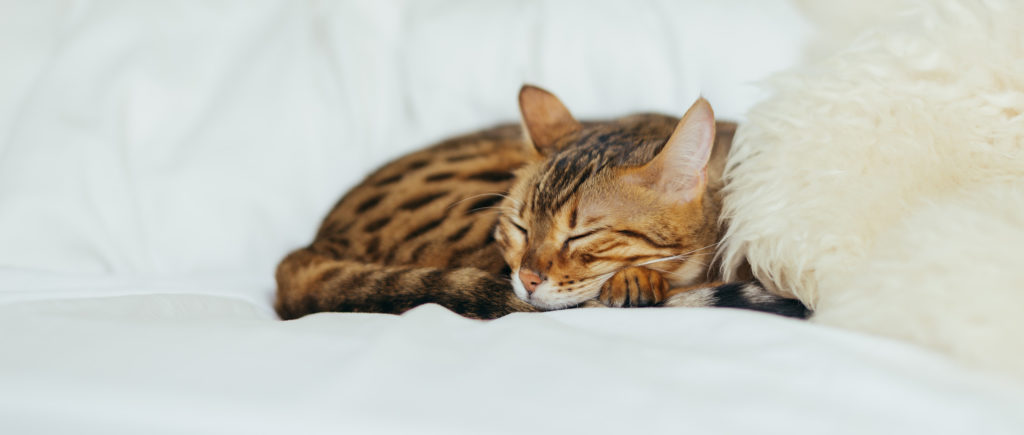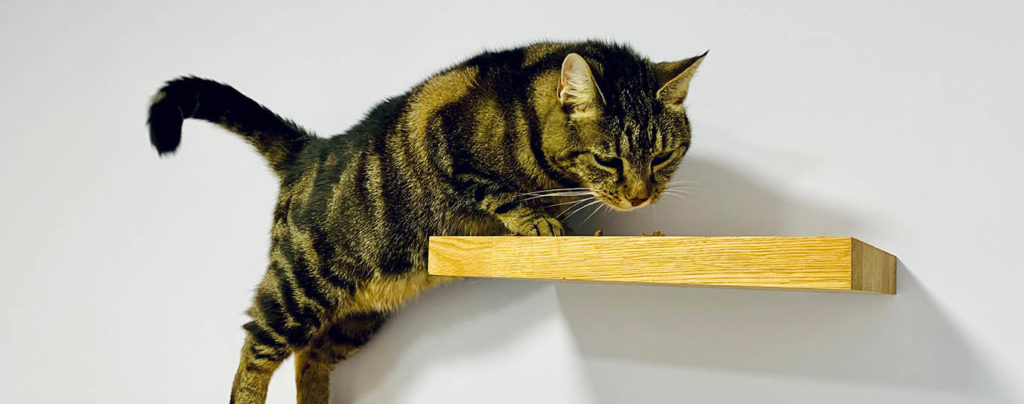Hyperthyroidism is a commonly diagnosed condition in cats over eight years of age. The typical age of onset is around 12-13 years. At the moment we don’t know why cats are so prone to hyperthyroidism.
Hyperthyroidism is a result of the thyroid gland (positioned in the neck) producing too much thyroid hormone, which causes an increase in metabolic rate. As a consequence of this, the heart rate is elevated and your cat will feel hungrier than usual. If the disease is left unmanaged it can lead to changes in the heart muscle, severe weight loss and sadly in some cases it can cause heart failure.
In 98% of cases, the disease is caused by a benign tumour affecting the thyroid gland. In a very small number of cases the tumour can be malignant. Sometimes cats will develop extra thyroid tissue in unusual places such as their chest which then releases extra thyroid hormone.
Hyperthyroidism can affect your cat’s blood pressure and kidney function so we recommend monitoring them closely as your cat ages. Following treatment to bring the thyroid level back to normal it is possible to see changes in kidney function so it is vital that we monitor them closely during treatment.
With correct treatment and monitoring, cats that suffer from hyperthyroidism have a good prognosis. As with all diseases, early detection can limit the damage that this disease can do.

Signs of Hyperthyroidism
The most commonly observed signs are an increased appetite combined with weight loss and changes in temperament or activity. Your cat may seem agitated or be more vocal than usual. Increased thirst and urine output, vomiting, diarrhoea and coat changes are also commonly seen. Occasionally the opposite is seen and cats may become more lethargic and eat less than usual.
Diagnosis
The condition is fairly easy to diagnose on a blood test that measures the total thyroid hormone level (T4). Other medical conditions for example, chronic kidney disease, may suppress levels of thyroid hormone, so we may be suspicious of hyperthyroidism even when T4 is within the normal range. Occasionally it may be necessary to measure something called freeT4 if the first blood test is inconclusive.

Treatment
1. Medication
The most common treatment method is with daily medication as either tablets or a liquid. These medications block the production of T4. Regular blood tests are necessary to ensure that the hormone level is well controlled. For cats that are intolerant of the oral medication a topical ear gel is available. Medication can give successful control of hyperthyroidism within a few weeks. As with any medication, there can be side-effects which a vet would discuss with you.
2. Surgery
At Beacon View we can offer a surgery to remove one or both sides of the thyroid gland can be surgically removed to reduce the amount of thyroid hormone being produced. There are some risks involved with surgery including the anaesthetic risk and the risk of damage to surrounding structures, particularly when both sides of the thyroid are removed. However surgical management can remove the requirement for long-term daily medication and frequent blood tests and can be a good treatment option for younger cats that do not have co-exisiting conditions. As mentioned above some cats develop thyroid producing tissue elsewhere in their body so removal of the thyroid glands may not result in a cure.
3. Dietary Management
A prescription diet is available which has a restricted iodine content (iodine is required for the production of thyroid hormone). However, the diet is only suitable for completely indoor, single cats and palatability can be an issue. It is important that they eat only this one food for this method to be effective, and that can be quite challenging for fussy cats. For these reasons dietary management is less frequently used.
4. Radioactive Iodine Treatment
This method of managing hyperthyroid cats is becoming more popular as it does not involve general anaesthesia and has few side effects.
A dose of radioactive iodine is administered orally or by injection, which kills the abnormal thyroid cells in any location. To undergo this form of treatment your cat will need to be hospitalised at a specialised centre (usually between 1-3 weeks). Prior to treatment additional health checks are necessary to ensure that this treatment will be safe for them. There is a small risk of developing hypothyroidism (low thyroid hormone level) afterwards but treatment is usually successful in the long term.
Please contact us if you would like to discuss these treatment options further or if you have any questions about hyperthyroidism.